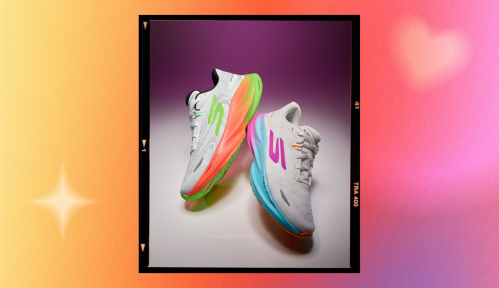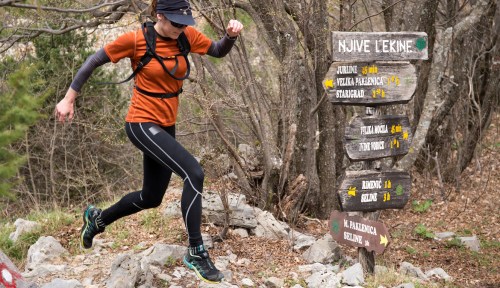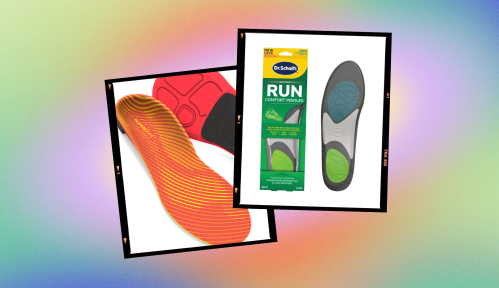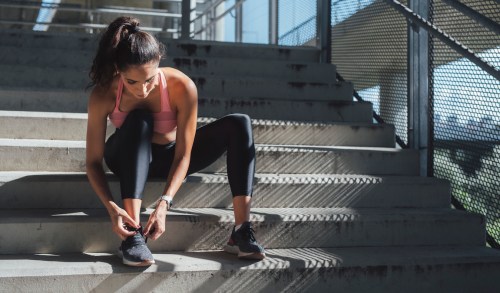Our editors independently select these products. Making a purchase through our links may earn Well+Good a commission
If You Suffer From Shin Splints, You Might Be Wearing the Wrong Sneakers—Try These 9 That Are Podiatrist-Approved
A quality pair of shoes can ward off painful shin splints. Here are the best options, according to podiatrists.
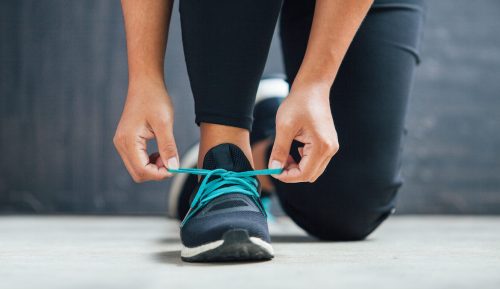
Have you ever woken up feeling recovered and ready to take on the day, only for things to quickly take a turn for the uncomfortable? You get up, get dressed, lace up your favorite running sneakers, and head out the door to go on a run or to your gym, where running is par for the course. The only problem is, once your feet start hitting the pavement or the treadmill, your shins start to ache, and then that ache begins to grow in intensity, spiraling up your lower legs until you eventually have to taper your speed (even though energetically, you feel up for the challenge). Such is the unfortunate reality of shin splints. Luckily, the right shoes can prevent shin splints from happening.
Experts in This Article
board-certified foot surgeon at Sole Podiatry NYC and star of TLC’s My Feet Are Killing Me
podiatrist and member of the Vionic Innovation Lab
board-certified orthopedic surgeon
Best sneakers for shin splints at a glance
- Best overall: Asics Gel Nimbus 23, $80
- Best for softer landings: Brooks Ghost 14 Women’s Road Running Shoes, $100
- Best cushioned: Hoka Rincon 3 Road Running Shoes, $125
- Best shock absorption: On Running Cloudgo Road Running Shoes, $150
- Best splurge: APL Women’s TechLoom Zipline, $320
- Best sustainable: Allbirds Tree Flyers, $89
- Best arch support: Vionic Miles II Active Sneaker, $110
- Most comfortable: Asics Gel-Cumulus 23, $60
- Best for running: Asics Gel-Contend 8, $55
But first, what are shin splints?
While runners are often correlated with the common aches and pains of shin splints, basketball, soccer, and lacrosse players, as well as dancers, are also prone to experiencing them.
“Shin splints are mainly caused when you overwork the tissue and muscle that surround your shinbone, leaving the tissue, muscles, and tendons around your shinbone inflamed and sore,” explains board certified foot surgeon, Dr. Brad Schaeffer, who is a Dr. Scholl’s spokesperson and star of TLC’s My Feet Are Killing Me. “This can be due to repetitive physical activity with frequent starts and stops.”
It’s not just top athletes that develop shin splints, though. “We see shin splints often in patients with flatter type feet,” says Vionic Innovation Lab Member and nationally renowned podiatrist, Dr. Jackie Sutera. “This creates a type of imbalance during activity and especially repetitive motions like running and walking.”
What shoes to avoid if you don’t want shin splints
Thankfully, one thing that can help ward off the painful splintering is proper footwear. “Old worn out shoes or wearing shoes without proper support can cause shin splints,” Sutera warns. That’s why it’s so important to uncover the best sneakers to prevent shin splints.
“Wearing well made shoes with proper cushion and support helps to neutralize the foot which in turn helps the legs,” Sutera shares, noting that well-cushioned shoes with adequate shock absorption can prove especially beneficial for preventing shin splints. “Look for a deep seated heel cup, a cushioned sole, and arch support.”
With that in mind, keep reading for the best shoes for shin splints.
Best sneakers for shin splints

Best overall: Asics Gel Nimbus 23 — $80.00
Sizes available: 5-13
With thousands (yes, thousands) of beaming reviews, the Asics Gel Nimbus 23 Running Shoes are a clear top pick for shin splint-preventing shoes. They’re designed with all-encompassing comfort in mind. From the lightweight and forward-propelling Flytefoam cushioning and the GEL technology shock absorption to the breathable mesh upper and OrthoLite sockliner, these running shoes go a step above for any runner, but especially those that are prone to shin splints.
Colors: 14
Pros:
- Lightweight
- Cushioned midsole
- Cushioned heel for shock absorption
Cons:
- Some reviewers say the toe box isn’t very wide

Best for softer landings: Brooks Ghost 14 Women’s Road Running Shoes — $100.00
Sizes available: 5-13
One of Schaeffer’s go-to running shoe brands is Brooks. The Brooks Ghost 14 Road Running Shoes are particularly great because they’re designed with the typically-harsh impact of sneakers on asphalt (which is a common trigger for shin splints) in mind. The sneakers, which are sold in many colors, are engineered to promote softer landings and smooth transitions, both of which help prevent splintering pains from becoming prominent.
Colors: 16
Pros:
- Soft cushioning
- Stretchy upper
- Segmented crash pad to help with smoother transitions
Cons:
- Some reviewers say it could be more cushioned

Best cushioned: Hoka Rincon 3 Road Running Shoes — $125.00
Sizes available: 5-12
Schaeffer’s other top recommended shoe brand for preventing shin splints is Hoka. The Hoka Rincon 3 Road Running Shoes are currently sold in fun, vivid colors and have optimal cushioning without loads of added weight. Additionally, they’re made with an early stage meta-rocker, which promotes smoother transitions and bouncy propulsion, which helps to prevent harsh impact.
Colors: 19
Pros:
- Lightweight
- Balanced cushioning
- Early stage meta-rocker for smoother transitions
Cons:
- Bulkier shoe
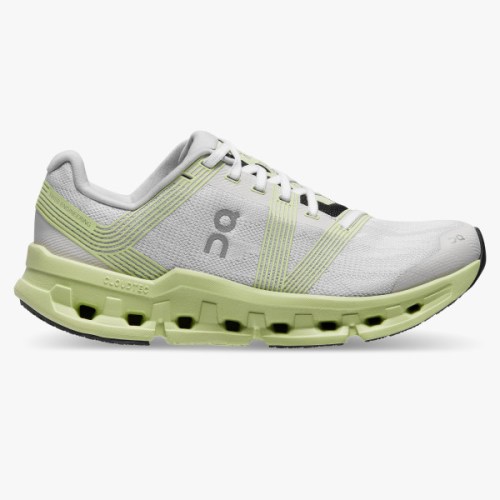
Best shock absorption: On Running Cloudgo Road Running Shoes — $150.00
Sizes available: 5-11
On Running is pretty much synonymous with the most innovative designs on the market. Its CloudTec cushioning promotes soft landings and powerful rebounds that are fully supported every step (and stride) of the way. The brand’s latest silhouette is the Cloudgo Road Running Shoe, which utilizes CloudTec technology alongside a TPU Speedboard, is highly supportive with adequate shock absorption and maximum comfort, all of which help make for less (if any) shin splints along the way.
Colors: 6
Pros:
- Lightweight
- Cloud-Tec cushioning for soft landings and energy return
- Made with recycled materials
Cons:
- Larger heel to toe drop (11mm)

Best splurge: APL Women's TechLoom Zipline — $320.00
Sizes available: 5-11
Prefer a notably chunkier silhouette? APL’s TechLoom Zipline is beloved for its flexible yet supportive TechLoom upper and shock-absorbing, rebound-promoting FutureFoam midsole. And it comes in a dizzying number of different colors. All in all, these stylish celebrity-loved running shoes will make you look and feel your best mid-stride.
Colors: 46
Pros:
- Lightweight
- Seamless construction
- Responsive cushion in the midsole
Cons:
- Expensive
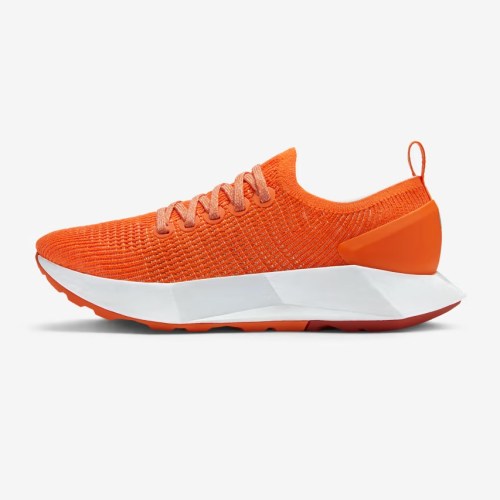
Best sustainable: Allbirds Tree Flyers — $89.00
Sizes available: 5-11
Lightweight and designed to promote bounce in each step, the Allbirds Tree Flyers are a great running shoe, especially for those with narrower feet and/or a proclivity for pronation. Since they’re designed with a heel counter, they help to keep the foot in line for steady, soft-footed strides mile after mile.
Colors: 12
Pros:
- Midsole is cushioned and provides energy return
- Lightweight and breathable
- Tested with over 100 runners across various conditions and climates
Cons:
- Some reviewers say they’re not as good for running
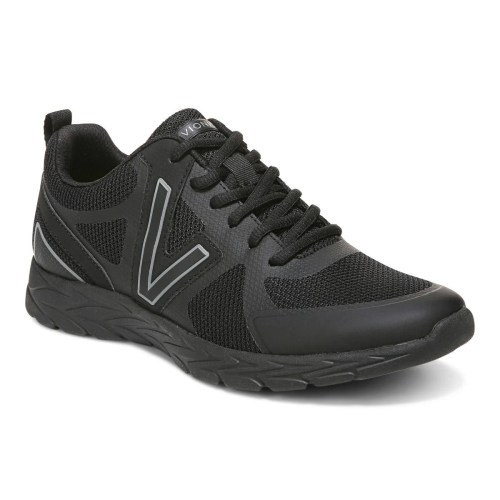
Best arch support: Vionic Miles II Active Sneaker — $110.00
Sizes available: 5-12, medium and wide
When it comes to highly supportive sneakers (and shoes in general), you can never go wrong with Vionic, considering the brand uses podiatrist-designed orthotics. The Miles II Active Sneakers are made with said orthotics, and can be worn for running, jogging, walking, and everything in between—without fear of shin splints in the process. They also have the American Podiatric Medical Association (APMA) Seal of Acceptance.
Colors: 5
Pros:
- Built-in orthotic
- Lightweight
- Cushioned outsole
Cons:
- Some reviewers say they run narrow
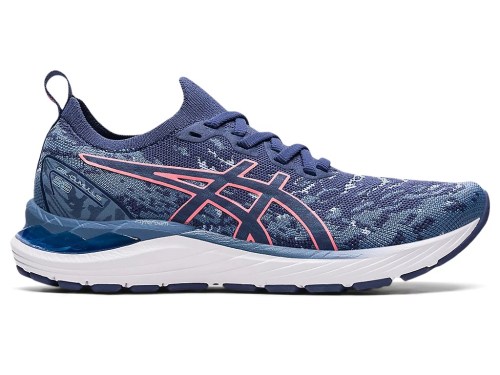
Most comfortable: Asics Gel-Cumulus 23 — $60.00
Sizes available: 5-12
Jerome Enad, MD, a board-certified orthopedic surgeon recommends the Asics Gel Cumulus-23 because they are “neutral-cushioned shoes that feature maximum midsole cushioning and minimum medial support.” These features can help support runners who are midfoot or forefoot strikers and more susceptible to impact injuries like shin splints. The sneakers are also lightweight and also have a knit sock upper for comfort and support.
Colors: 4
Pros:
- Sock construction hugs your foot
- GEL technology cushioning
- Designed to help reduce pronation
Cons:
- Some reviewers say they run small
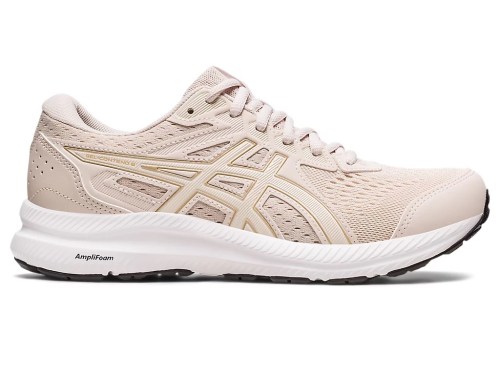
Best for running: Asics Gel-Contend 8 — $55.00
Sizes available: 5-12
Another neutral-cushioned shoe recommendation from Dr. Enad, the Asics Gel-Contend absorb impact and have a flexible outsole to make each stride comfortable. The upper is made of a mesh jacquard that’s stretchy and breathable, but it also has extra stitching to make it supportive, too. With both gel and foam cushioning under your foot, you’ll be able to log some serious miles without your shins hurting.
Colors: 19
Pros:
- Rearfoot and midfoot cushioning absorbs impact
- Breathable upper
- Flexible sole
Cons:
- Some reviewers say they run small
You *could* get insoles to help prevent shin splints, too
If you’re not in the market to buy a new pair of shoes, but want to find a way to ward off that painful splintering feeling, insoles can help tremendously.
“Most sneakers come with thin, non-contoured insoles that wear out quickly and typically provide little to no cushioning or arch support,” Schaeffer says. “Adding the proper insole can make all the difference.” For shin splint protection, he recommends Dr. Scholl’s® Performance Sized to Fit Running Insoles ($40). “They are clinically proven to help prevent pain from shin splints, plantar fasciitis, and runner’s knee,” he explains.
And remember that you do need to replace your sneakers eventually
While insoles and specifically designed shoes can help recover and prevent shin splints, at some point they do give out, which can make shin splints reappear. That’s why it’s important to remember that, as much as you may love a specific pair of shoes, they do have a lifespan.
“It is recommended that shoes be replaced around the 12-month mark—some people may have to replace shoes sooner, depending on individual wear,” Sutera says. If you’re unsure if it’s time for a new pair of shin splint-preventing shoes, perform Sutera’s “Table Top Test.”
“Put your shoes up on a table top at eye level and examine them for asymmetry, signs of wear, and soles that are lopsided,” she instructs. “Also, look inside and turn them upside down and look at the soles for any holes or smoothing tread.” If you notice any of these things, it’s time for a new pair of athletic shoes. At least you’ve come to the right place.
Want to be the first to hear about the latest (and greatest) SHOP product drops, custom collections, discounts, and more? Sign up to have the intel delivered straight to your inbox.
Sign up for the Well+Good SHOP Newsletter
Get exclusive deals on wellness, beauty, fitness, and food products that have been hand-picked by our editors.
Got it, you've been added to our email list.

